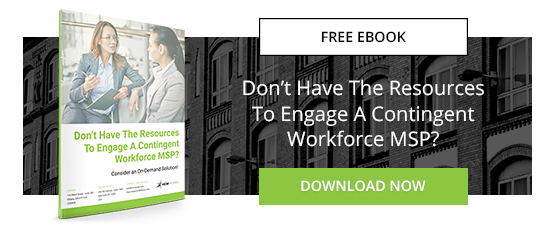Worker misclassification is a widespread problem in the United States. On a national level, it is estimated that millions of employees have been misclassified as independent contractors by their employers, according to the Internal Revenue Service.
It doesn’t matter whether you are misclassifying intentionally to reduce your labor costs, avoid paying federal and state taxes, and avoid following labor laws or if you’re doing so unintentionally and in error. The ugly truth about worker misclassification is that you will get caught, even if it was an innocent error. No matter why or when you misclassified. No matter your intentions.
The error might have been done years ago. It might have been done simply due to lack of knowledge when you were starting to hire contingent workers for the first time. The error might have been made by a past employee. It just doesn’t matter. You will face the consequences if you have been caught improperly labeling your employees as independent contractors. Some of the consequences include bad press, a bad reputation, the loss of clients or top talent, fines and penalties as well as and subsequent legal fees and settlement fees ranging from the thousands to the millions, being forced to pay back taxes with interest, and even jail time for the really guilty business owners.
If you don’t know the difference between an employee and an independent contractor and you haven’t taken the appropriate steps to properly classify all of your workers, your laissez-faire attitude could end up costing you in myriad ways. The feds are cracking down on noncompliance. It’s time to get the facts and start being proactive in your approach to classification.
The Effects of Misclassification
When you misclassify, your employees lose. They lose out on workplace protections set forth in the Fair Labor Standards Act, such as the right to join a union, get overtime pay, holiday pay, and breaks, and more. They face an increased tax burden while being responsible for their own deductions. They are typically ineligible for disability compensation and unemployment insurance. It’s clear that when you take part in worker misclassification, you hurt your employees.\
Misclassification also causes local, state, and federal governments to suffer revenue losses in the millions each year due to employers who circumvent their tax obligations.
Of course, the governments are going to want to cash in on the money they are owed. They will come after you for back taxes, owed social security premiums, and owed unemployment remittances. And employees who believe they were misclassified can also file lawsuits for unpaid benefits, health coverage, overtime, expense reimbursement, and more. All of which affect your bottom line.
The Distinction Is Crucial
Differentiating between contractors and employees can be difficult but making the right determination is crucial to avoiding worker misclassification. There are some points of differentiation to keep in mind while labeling your workers. Under the law, an independent contractor retains control over how the goods or services are provided; is not subject to the financial or behavioral control of the employer; treat the employer as a client or customer rather than a boss; has multiple clients; has a set assignment length; owns his own equipment and tools; often owns his own business; can subcontract work; and has an opportunity for profit or loss.
Though it might seem easy to use these factors as a checklist to ensure proper classification, the lines between self-employed worker and employee are often blurred; many workers can fit into both boxes. This is where things get tricky and employers face the risks of worker misclassification.
There is no foolproof way to avoid worker misclassification. There is no test that will solve the issue. The applicability of the tests government bodies use to distinguish between employees and contractors depend on the specific workplace situation.
Get expert help through a workforce management service provider or classify at your own risk.



